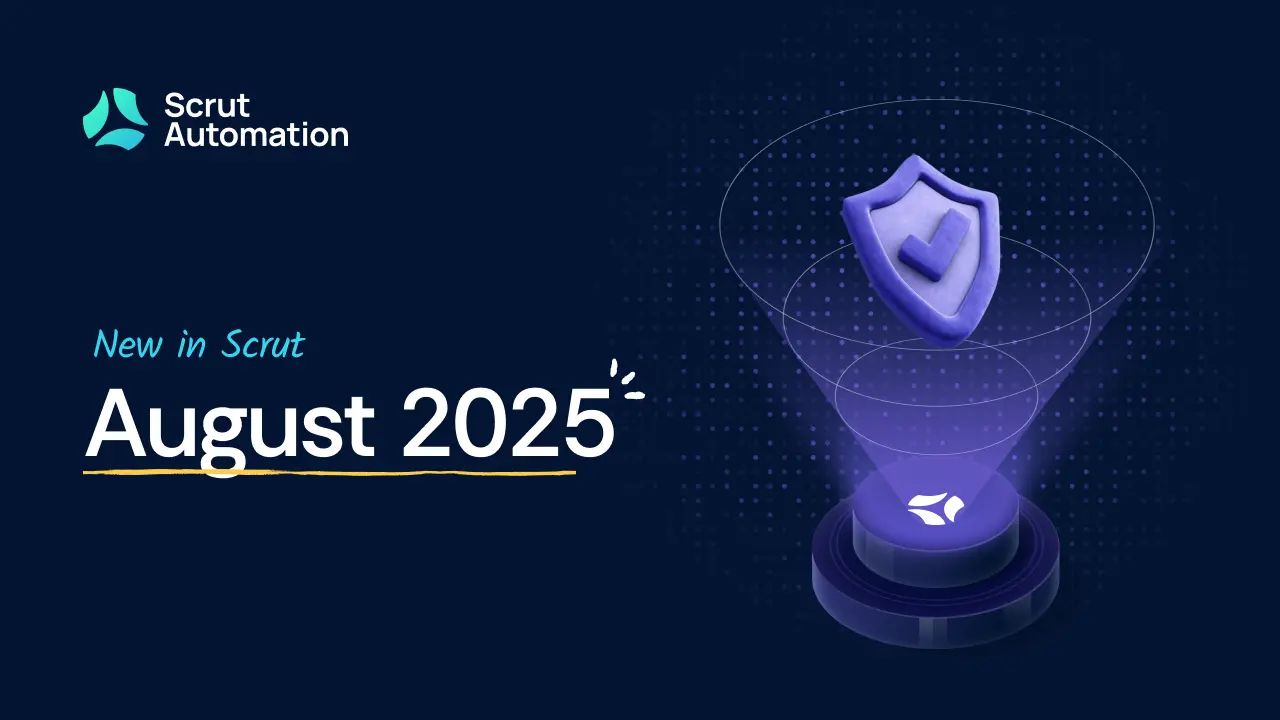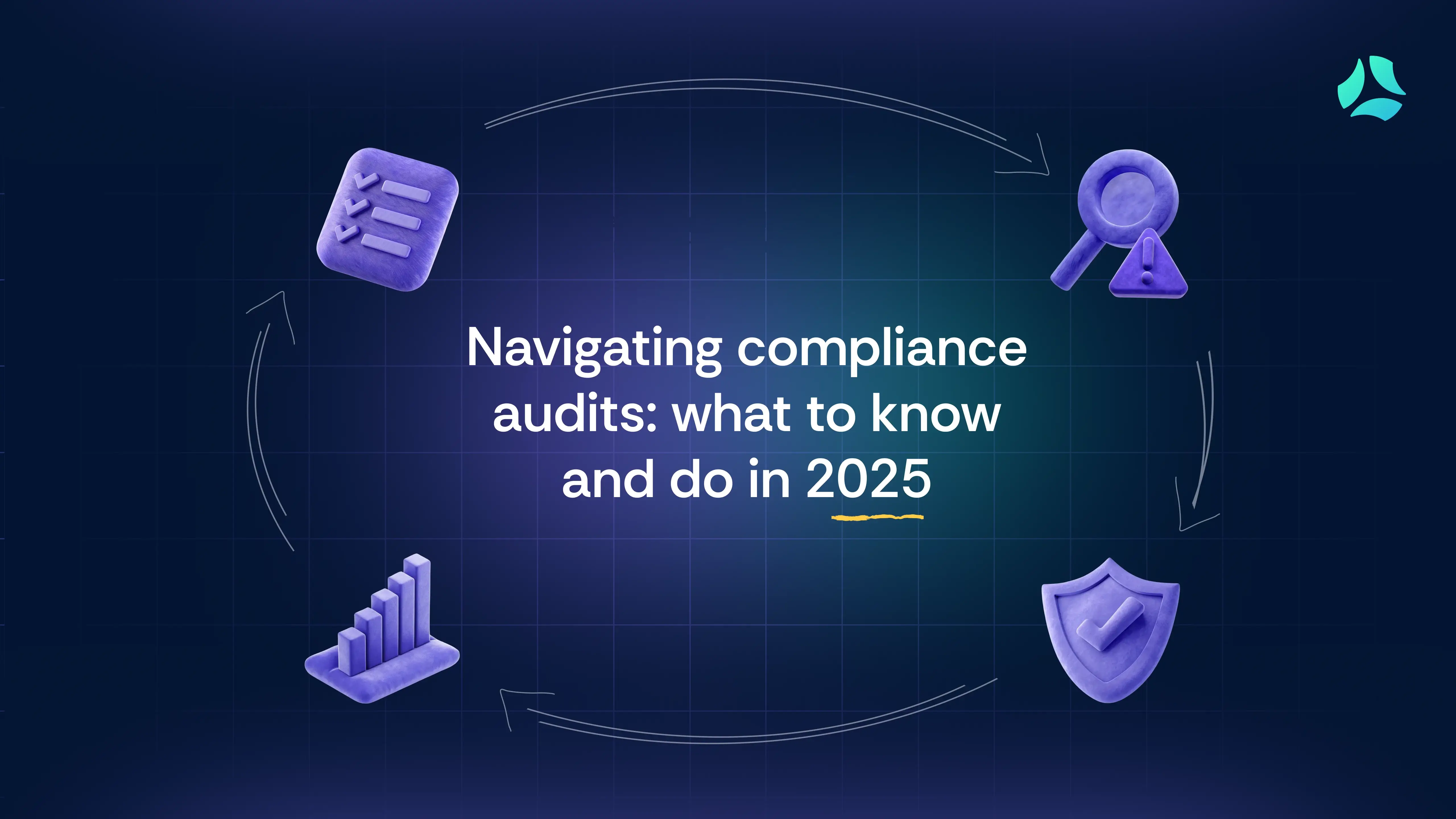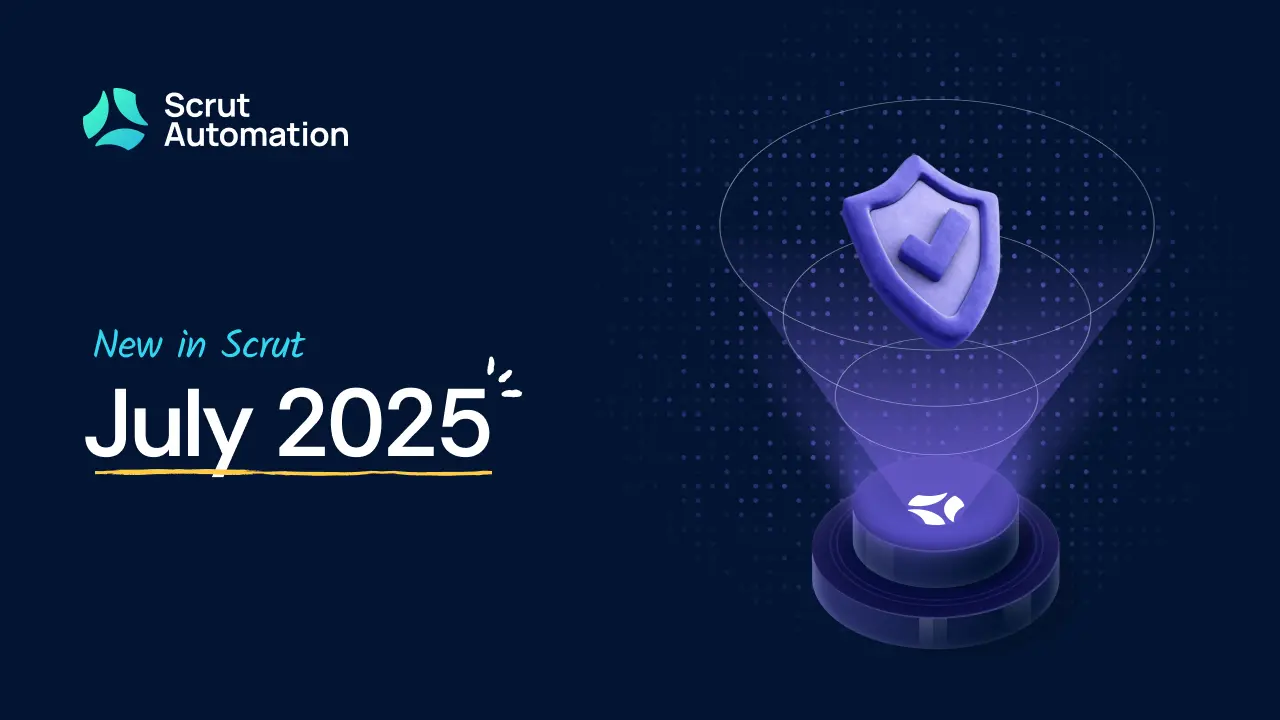9 easy steps to review a vendor's SOC 2 report

Vendor relationships are more than transactional—they're a key component of your security strategy. A data breach at one of your vendors could potentially expose your sensitive data, making vendor risk management a critical part of your security program.
Evaluating a vendor's SOC 2 report isn't just a formality; it's a critical step in assessing their commitment to security, privacy, and compliance. Done right, a thorough SOC 2 review can help you identify risks, ensure data integrity, and strengthen your organization's overall security posture. Here's a detailed, step-by-step guide to reviewing SOC 2 reports confidently and effectively.
What is a SOC 2 report?
System and Organization Controls 2, better known as SOC 2 is a voluntary compliance standard developed by the American Institute of Certified Public Accountants (AICPA) in 2010 to define data security standards for organizations.
It is usually requested by customers to evaluate the security and compliance practices of service organizations.SOC 2 reports assess the controls related to security, availability, processing integrity, confidentiality, and privacy of data. They have a broader scope than SOC 1.
Types of SOC 2 reports
There are two types of SOC 2 reports:
Type I: It evaluates the vendor's controls related to security on a specific date without checking operational effectiveness. It is usually done to gain a rough idea of the vendor's compliance.
Type II : It assesses the vendor's controls related to security over a period of time, and it also gauges operational effectiveness.
Read also: SOC 2 Type 2- The ultimate guide for beginners
What are its Trust Principles?
SOC 2 reports analyze whether vendors process data securely. The AICPA prescribes five Trust Principles or Trust Services Criteria (TSC) based on which the vendor's controls are evaluated. The five principles are:
- Security: Security refers to the protection of data from unauthorized access.
- Processing integrity: This principle ensures that the system works as per design without delay, bugs, or errors. It ensures that data is not tampered with.
- Privacy: Vendors should have stringent security standards in place. They must adhere to the privacy regulations of the enterprise, government, and other regulatory authorities.
Customer data, especially sensitive personally identifiable information (PII), should not be shared without the customer's explicit permission.
- Confidentiality: Customer data, including PII, should be encrypted while in transit and at rest. The data should be available only to authorized users and only when needed.
- Availability: The availability principle ensures that data is available to every authorized user when it is needed to perform specific duties.
Read more: What are SOC 2 Trust Services Criteria and why do they matter?
What does a SOC 2 report contain?
Independent auditors verify the implementation of the SOC 2 standard in an organization. A SOC 2 report contains the following:
1. An overview of the report: This includes the purpose, scope, and objectives of the assessment.
2. Management's assertion: The vendor's management provides a statement asserting its commitment to meeting the relevant TSC.
3. Description of the system: This part of the report details the system and services provided by the organization, including its infrastructure, software applications, and processes involved.
4. Control objectives : The control objectives that the service organization aims to achieve are listed in the report. These objectives align with the criteria specified in the TSC.
5. Control descriptions: Detailed descriptions of the controls implemented by the service organization to achieve the control objectives are also included.
6. Control Testing: The testing procedures employed by the auditor are described in the report. This includes the methods used to test the effectiveness of the controls, sample sizes, and the results of the testing.
7. Results and opinion: The auditor records their assessment of the controls based on the testing performed. Their report concludes whether the controls meet the TSC or if they fail to do so.
How do you review your vendor's SOC 2 reports?
Now that we've established the importance of reviewing a vendor's SOC 2 report, let's take a look at how to effectively review vendor's SOC reports. The process of reviewing involves a systematic approach to comprehensively understand the report and its implications for your organization.
Here are some steps that will help you review a vendor's SOC 2 report effectively.
Step 1: Familiarize yourself with the scope and objectives
The first step involves understanding the scope of the vendor's SOC 2 report, including the systems, services, and processes covered. You will then need to go through the control objectives listed in the report. It is important to ascertain if the controls meet the TSC and other objectives listed in the report.
As we mentioned earlier, there are two types of SOC 2 reports: Type I and Type II. While carrying out the review of the vendor, an organization must focus on the type of report the vendor possesses.
Type II reports are more exhaustive and provide a clearer picture of the vendor's compliance. They are useful for the organization's customers and stakeholders, as they demonstrate that it follows the SOC standards consistently.
Step 2: Assess the auditor's opinion
The section that documents the auditor's opinion will provide an overall assessment of the vendor's controls. It is crucial to consider any qualifications, exceptions, or deficiencies noted by the auditor. The auditor's findings will give you an idea about the vendor's ability to meet your organization's requirements.
Read also: How long does it take for SOC 2 compliance to be complete?
Step 3: Evaluate control descriptions
It is important to assess whether the vendor's controls align with your organization's security and compliance requirements. This is why it is necessary to carefully review the control descriptions provided in the SOC 2 report. Make sure to check for specific controls related to the trust criteria.
Step 4: Validate control effectiveness
SOC 2 Type II reports assess the operating effectiveness of the controls. If you are reviewing this type of report, search for evidence such as testing procedures and results to support the vendor's claims about control effectiveness. It is critical to pay attention to any control deficiencies or exceptions identified and gauge their significance and impact.
Step 5: Analyze complementary user entity controls
It is not rare for SOC 2 reports to mention the need for Complementary User Entity Controls (CUECs). Some vendors expect their customers to have these controls in place to complement their own controls. For instance, the vendor may encrypt their financial data and expect their customers to do the same.
So, it is necessary to go through the SOC 2 report to assess whether your organization has the appropriate CUECs in place.
Step 6: Evaluate monitoring and incident response
Reviewing the vendor's processes for monitoring, incident response, and security event management is crucial for evaluating their security. While going through the report, it is important to look for evidence of incident response testing, monitoring tools, and security incident handling procedures. You will need to assess the effectiveness of these procedures to determine whether the vendor is well prepared in the event of a security breach.
Step 7: Seek clarifications and additional information
If you have any doubts regarding any section in the report, make sure that you reach out to the vendor or the auditor who prepared the SOC 2 report. Requesting additional information regarding specific controls is important to avoid overlooking potential security risks.
Step 8: Assess alignment with your organization's requirements
Determining if the findings in the vendor's SOC 2 report align with your organization's security, compliance, and risk management requirements is an important step. It is crucial to assess the vendor's controls and processes in relation to the services they provide and the sensitivity of the data involved.
Read more: What is SOC 2 automation software?
Step 9: Take action based on the audit report
There are three basic types of audit reports: unqualified, qualified, and adverse.
An unqualified report indicates that the vendor's internal controls are satisfactory and in tune with the SOC 2 standard.
A qualified report, on the other hand, implies that the internal controls are adequate but have a lot of scope for improvement.
Finally, an adverse report indicates that the internal controls do not meet SOC 2 standards.
If your vendor has an adverse report, doing business with them may not be the best idea. When it comes to vendors with a qualified report, it is necessary to assess their controls relating to customer data before engaging them.
Read more: Ultimate guide to SOC 2 compliance documentation

Why is it important to review your vendors' SOC 2 reports?
SOC 2 reports determine whether your vendors are taking adequate steps to protect your data. If any one of your vendors' databases gets breached, your organization stands the risk of a secondary breach that could lead to financial and reputational damages.
Therefore, an organization can benefit from reviewing its vendor SOC report and knowing the level of trust it can place in the vendor's information security systems.
Here are some reasons why it is important to review your vendor's SOC 2 reports.
1. It assesses the vendor's security and compliance
SOC 2 reports allow you to evaluate the effectiveness of your vendor's security controls and assess their compliance with industry standards and regulatory requirements. They help you determine if the vendor has implemented appropriate measures to protect data and mitigate security risks. This ensures that they do not pose a threat to your organization's security and compliance.
2. It supports vendor selection and due diligence
SOC 2 reports can help in vendor selection. You can determine if a vendor aligns with your organization's security and compliance needs by reviewing their SOC 2 report. By demonstrating SOC 2 compliance vendors prove that they are committed to protecting customer data and have adequate security measures in place.
3. It helps manage risk
SOC 2 reports help you evaluate the potential risks associated with engaging a vendor. Any control deficiencies in the vendor's SOC 2 report can warn you against potential risks that they could pose to your organization.
4. It ensures data protection and privacy
SOC 2 vendor management reports evaluate a vendor's controls related to data protection and privacy. Reviewing the report helps in determining if the vendor is well-equipped to safeguard sensitive information. This helps in ensuring the protection and privacy of your organization's data.
5. It secures trust and reputation
Reviewing a vendor's SOC 2 report helps in gauging their commitment to security, compliance, and risk management. By engaging trustworthy vendors, your organization demonstrates its own dedication to data protection and privacy to its customers, regulators, and stakeholders.
Further reading: How to turn SOC 2 compliance into a growth strateg
Secure your vendors with Scrut
Regularly reviewing SOC 2 reports is one of the best ways to assess the security of your vendors and make informed decisions about conducting business with them.
By staying up-to-date with your vendors' security posture through these reviews, you can effectively monitor their performance and mitigate risks associated with their services.
Adopting SOC 2 standards is beneficial for both your organization and its vendors. It guarantees compliance and adequate security for your company and all its third-party associates.
Scrut simplifies SOC 2 compliance with its prebuilt controls and continuous compliance monitoring. To discover how Scrut can streamline the compliance process for your organization, schedule a demo today!

FAQs
1. What is a SOC 2 report?
A Systems and Organization Controls 2 (SOC 2) report is a comprehensive internal controls report that focuses on how a company protects customer data and assesses the effectiveness of the controls that it uses.
2. What are the types of SOC reports?
There are three types of SOC reports: SOC 1, SOC 2, and SOC 3:
- SOC 1 focuses on internal controls governing financial reporting.
- SOC 2 evaluates the controls related to security, availability, processing integrity, confidentiality, and privacy of data.
- SOC 3 summarizes the SOC 2 report.
3. What are the types of auditors' opinions in SOC 2?
There are three types of auditors' opinions - unqualified, qualified, and adverse.
- An unqualified report indicates that the vendor's internal controls are satisfactory and in tune with the SOC 2 standard.
- A qualified report implies that the internal controls are adequate but have a lot of scope for improvement.
- An adverse report indicates that the internal controls do not meet SOC 2 standards.


















